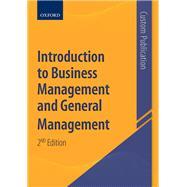Question
A large American company in the processing industry operates paper mills in Augusta (Maine) and Tupper Lake (New York). Warehouse facilities are located in Albany
A large American company in the processing industry operates paper mills in Augusta (Maine) and Tupper Lake (New York). Warehouse facilities are located in Albany (New York) and Portsmouth (New Hampshire). Distributors are located in Boston, New York and Philadelphia. Plant capacities and distributor demands for next month are as follows:
| Plant | Capacity(Units) |
| Augusta | 300 |
| Tupper Lake | 100 |
| Distributor | Capacity(Units) |
| Boston | 150 |
| New York | 100 |
| Philadelphia | 150 |
The unit transportation costs (in $) for shipments from the two plants to the two warehouses, and from these to the three distributors, are as follows:
| Plant | Warehouse | |
| Albany | Portsmouth | |
| Augusta | 7 | 5 |
| Tupper Lake | 3 | 4 |
| Warehouse | Distributor | ||
| Boston | New York | Philadelphia | |
| Albany | 8 | 5 | 7 |
| Portsmouth | 5 | 6 | 10 |
1. Plot the network of this transshipment case and say how many plants, warehouses, and distributors there are. (10 points) a) 2, 2, 3 b) 2,3,2 c) 3,2,2 d) All of the above
2. Define number and name of the variables. (10 points) a) 10 variables: Number of units to be transported from the plants to the distributors. b) 10 variables: Number of units to be transported from the plants to the distributors through the warehouses. c) 6 variables: Number of units to be transported from the plants to the distributors through the warehouses. d) None of the above
3. Formulate the complete linear programming problem for this case and say. (10 points) a) The PPL has 7 constraints and all are of the type less than or equal to (<=). b) The PPL has 7 constraints and all are of the type greater than or equal to (>=). c) The PPL has 7 constraints and all are of the type equal to (=). d) All of the above.
4. Set up the transshipment board, the initial solution by MAV, and indicate the value of the basic variables in the table and initial total cost. (20 points) a) The board must have 8 basic variables, otherwise there is degeneration. b) In some interaction, degeneration occurred and was solved by placing a zero that acts as a basic variable in the row or column that is satisfied. c) This particular case does not need plants, warehouses, or fictitious or artificial distributors. d) All the previous statements are correct.
5. Apply the optimality test to each of the non-basic variables (unoccupied boxes) until the optimal solution is found. (20 points) a) When applying the optimality test to the initial Voguel (MAV) approach, the SI solution is optimal because all non-basic variables are >= 0. b) When applying the optimality test to the initial Voguel (MAV) approach, the solution is NOT optimal because some non-basic variable(s) are <= 0. c) It can be a) or b) d) I do not have criteria or tools to affirm whether it is optimal or not.
6. What is the optimal distribution solution table (value of each variable) with its respective optimal total cost? Make a clear and professional interpretation. (30 points) a) Optimal total cost: $4150.00 b) Optimal total cost: $4300.00 c) Optimal total cost: $4450.00 d) None of the above
Step by Step Solution
There are 3 Steps involved in it
Step: 1

Get Instant Access to Expert-Tailored Solutions
See step-by-step solutions with expert insights and AI powered tools for academic success
Step: 2

Step: 3

Ace Your Homework with AI
Get the answers you need in no time with our AI-driven, step-by-step assistance
Get Started


